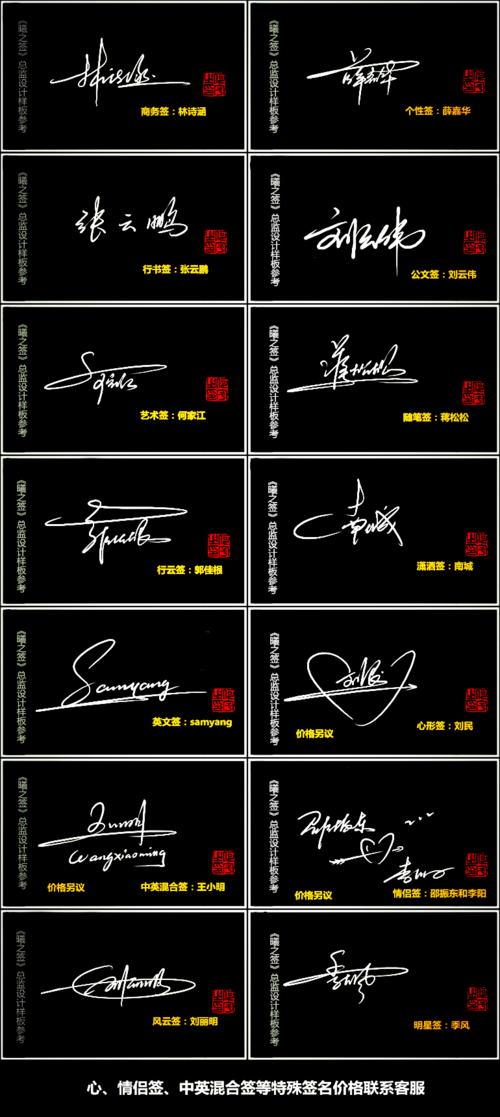艺术签名设计马雪怎么连笔
Title: Crafting an Artistic Handwritten Signature Design
Creating a handwritten signature that reflects your personality and style can be a delightful artistic endeavor. Whether you're signing documents, letters, or artworks, a unique signature adds a personal touch and can leave a lasting impression. Below, I'll guide you through the process of designing a distinctive handwritten signature.
1. Understand Your Style:
Before diving into the design process, take a moment to consider your personal style and the impression you want to convey. Are you aiming for elegance, simplicity, or something more elaborate? Understanding your preferences will guide your design choices.
2. Experiment with Letter Forms:
Begin by experimenting with different letter forms for your initials or full name. Play with variations in size, shape, and spacing to find a combination that feels balanced and visually appealing. You can try both cursive and print styles to see which suits you best.
3. Add Flourishes:
Flourishes can enhance the beauty and sophistication of your signature. Experiment with loops, swirls, and curves to embellish your letters. Be mindful not to overdo it—flourishes should complement your signature without overwhelming it.
4. Simplify:
While flourishes can be visually striking, a cluttered signature may be difficult to read and reproduce consistently. Aim for simplicity and clarity, ensuring that your signature remains legible even when written quickly.
5. Practice, Practice, Practice:
Like any skill, perfecting your signature requires practice. Set aside time to practice writing your signature until you're comfortable with the fluidity and consistency of your design. Experiment with different writing tools and surfaces to find what works best for you.
6. Seek Inspiration:
Draw inspiration from calligraphy, typography, and the signatures of artists or designers you admire. Analyze what makes their signatures appealing and consider how you can incorporate similar elements into your own design while maintaining originality.
7. Digitalize Your Signature:

In today's digital age, having a digital version of your signature is essential for electronic documents and online correspondence. Scan or photograph your handwritten signature and use graphic design software to refine and digitize it. Ensure that the digital version retains the charm and authenticity of the original.
8. Use Consistently:
Once you've finalized your signature design, use it consistently across all your professional and personal correspondence. Consistency not only reinforces your brand identity but also makes your signature easily recognizable.
9. Legal Considerations:
If you're using your signature for legal documents, ensure that it meets the necessary requirements for authenticity and validity. Consult legal professionals if needed to ensure compliance with relevant regulations.
Conclusion:
Designing a handwritten signature is a creative process that allows you to express your individuality and leave a memorable mark. By understanding your style, experimenting with letter forms, adding flourishes judiciously, and practicing diligently, you can craft a signature that is both aesthetically pleasing and functionally effective. Remember to embrace your uniqueness and let your personality shine through your signature.





